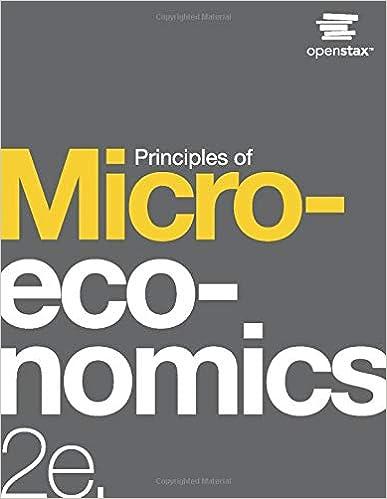Question
Case 1: One in five adults is obese in wealthy countries around the world. Unfortunately, in the United States, the rate is about two in
Case 1:
One in five adults is obese in wealthy countries around the world. Unfortunately, in the United States, the rate is about two in five (Organisation for Economic Cooperation and Development [OECD] 2017). Major causes appear to be sweet drinks and added sugars in other products. According to the Centers for Disease Control and Prevention (2017), frequent consumption of sweetened beverages is associated with obesity, heart disease, kidney diseases, cavities, and other diseases.
Oddly, despite the obesity epidemic, subsidies for crops that can be refined into sugar- corn, wheat, rice, sorghum, and others-continue. The subsidies reduce the prices of products containing sugars. These products include sodas, sweetened teas, and other products.
A number of local governments have enacted taxes on sweetened beverages, but no taxes have passed at the state or federal level. (France and Mexico have passed national taxes.) Paarlberg, Mozaffartian, and Micha (2017) argue that a 17 percent tax on sweetened beverages would reduce consumption by 15 percent.
1.What price elasticity does the estimate byPaarlberg, Mozaffartian, and Micha (2017) imply?
2.Can you find another estimate of the price elasticity of demand for sweetened drinks? (look for published work)
3.Is the demand for sweetened drinks elastic or inelastic?
4.Per question (1) above, If the price of sodas rose by 5 percent, how much would sales drop?
5.What are substitutes for sweetened drinks?
6.Can you find an estimate of the cross-price elasticity of demand for sweetened drinks? (look for a published paper)
7.Is water a complement or a substitute for soda? Explain
8.In light of your answer to the previous question, should the cross-price elasticity be positive?
9.Do you favor a tax on sweetened drinks? Why or why not?
10.Do you favor a tax on added sugars, why or why not?
Case 2: The Curious Case of Daraprim
In August 2015, Turing Pharmaceuticals raised the price of Daraprim from $13.30 a tablet to $750, an increase of 5,456 percent (Over and Silverman 2015). Daraprim is the only available treatment for toxoplasmosis, a rare infection that can become deadly for patients with weakened immune systems. This price increase means that an individual's treatment could cost up to $634,000. Daraprim's patent expired in 1953, and it can be compounded for less than a dollar per tablet. (Langreth 2015).
Two contradictory trends are evident. Generic drug prices have been declining in the United States since at least 2010, yet multiple generic drugs have risen in price.(Ornstein and Thomas 2017). The price increases generate far more attention than the price decreases, yet the structure of the market has not changed.
In the United States, pharmaceutical prices (indeed most medical prices) are based on negotiations between private insurers and suppliers. The US market has two features that are uncommon in other countries.. First, pharmacy benefit managers often act as an intermediary between insurers and suppliers. Second, the federal government plays a limited role in negotiating prices. Although the Department of Veterans Affairs negotiatesdrug prices for its beneficiaries, private firms negotiate for Medicare.
Questions
1.Would you expect demand for Daraprim to be elastic or inelastic?
2.What change in the market would make demand for Daraprim more elastic,? Less?
3.Why did other companies not start making versions of Daraprim?
4.Did Turing Pharmaceuticals violate any laws or regulations when it raised the price?
5.Companies have also raised prices for other non-patent drugs. Can you explain why?
6.Can you provide another example of large price increases for off-patent drugs??
Step by Step Solution
There are 3 Steps involved in it
Step: 1

Get Instant Access to Expert-Tailored Solutions
See step-by-step solutions with expert insights and AI powered tools for academic success
Step: 2

Step: 3

Ace Your Homework with AI
Get the answers you need in no time with our AI-driven, step-by-step assistance
Get Started


